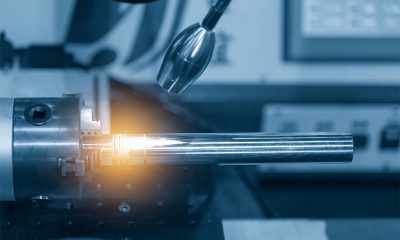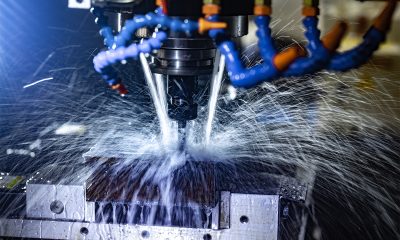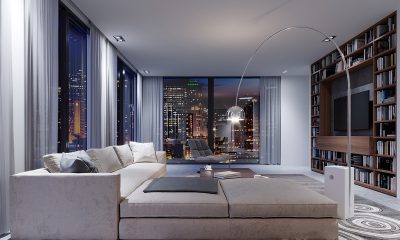What is a workbench light
A workbench light is an overhead, bench-supported or wall-mounted luminaire that provides task illuminance for works taking place at industrial workstations, manual assembly lines, packing tables, electronic workbenches, lab benches, jewelry polishing workstations, and visual inspection stations. Workbenches are a world of their own. Optimum visual conditions must exist to create a safe, comfortable and productive working environment. Clear visibility is crucial, but it’s not readily available with ceiling-mounted lighting. Within an industrial facility, high bay or low bay lighting whose locations are defined by the building structure is usually not adequate for visual challenging tasks performed on workbenches. In addition, obstructions below the luminaire mounting plane can produce shadows over the workstation.
Workbench lights are intended to provide a uniform, localized, and higher level of illumination. Localized lighting is an important contributor to sustainable lighting design. By placing lighting closer to the work surface, the tasks can be illuminated more effectively and lighting is delivered in a more efficient way. Localized lighting also helps direct attention on the visual task, which contributes to a reduction in errors and accidents.
Linear workstation lighting
Overhead workbench lights are almost universally designed as linear fixtures. Linear lighting enables uniform distribution of illuminance along the entire length of a work surface. Previously, linear workstation lighting is realm of fluorescent lamps. Fluorescent lamps provide the linearity and diffusivity of lighting that are highly desired in this application. The use of fluorescent lamps, however, leaves industrial users with many challenges, which include the exhausted potential of energy efficiency improvement, qualitative deficiencies in terms of spectrum and flicker, and expensive lighting maintenance.
Industrial facilities need high quality, high efficiency and highly dependable lighting. While there is still considerable room for improvement, LED lighting has already provided competency to address these needs. With incomparable source efficiency, optical delivery efficiency, spectral efficiency and intensity effectiveness, LED workbench lights deliver ever-improved efficacy over conventional lighting sources that enables a fast payback. While energy savings delivers an immediate return on investment, reduced maintenance costs from the use of LEDs with their extended lifetime and solid state durability push the boundaries of lighting economics. On top of that, LED lighting offers the chance to meet the highest industrial lighting requirements in terms of quality which is crucial to task performance and worker safety.
Lamp-based LED systems
The difference in performance between LED workbench lights is often a factor of design choices. In the past, linear workbench lights commonly took the form of “strips.” Strip lights are fixtures composed of simple metal channels which accommodate exposed linear fluorescent lamps. Glare and light distribution are controlled by the linear reflectors. This type of configuration is still in use thanks to the widespread availability of retrofit T5 and T8 LED tube lights. However, the design of LED workbench lights has veered away from lamp-based configurations.
The fixture-plus-lamp architecture is not only superfluous in design but also negatively affects the performance and service life of LEDs. Thermal management and drive current regulation are compromised in LED lamps due to physical constraints. The optical directionality and high flux density of LEDs call for an effective optical design to achieve high optical delivery efficiency, uniform light distribution and optimal visual comfort, which is impossible with lamp-based LED fixtures. The desired photometric performance, system efficiency and product lifespan of an LED luminaire can only be achieved through a high level of integration between LEDs and their supportive components such as the heat sink, driver and optics.
Integrated LED workbench lights
An integrated LED workbench light is most often a direct-lensed system. It incorporates an array of SMD LEDs solder mounted on a linear metal core printed circuit board (MCPCB). The SMD LEDs are usually mid-power packages that deliver high efficacy operation through the use if a reflective housing and leadframe. The luminous efficacy of these LEDs can exceed 200 lm/W.
Typical correlated color temperatures (CCTs) for workplace lighting are between 4000K and 5500K. High CCT LEDs have a spectral power distribution (SPD) biased toward the blue part of the visible spectrum and the emitted light is perceived as being cool white in color. Cool white light stimulates workers to alertness and concentration, which facilitates the establishment of a productive work environment. A minimum color rendering index (CRI) of 80 is usually adequate for most industrial applications. Higher fidelity color reproduction necessitates a light spectrum with uniform distribution of radiant energy. The rate at which an LED will deteriorate in luminous efficacy and deviate from the selected color is highly dependent on the temperature at its p-n junction.
Mid-power LEDs are plastic packages which are very susceptible to high temperatures. Operating these LEDs at high drive current without effective thermal management will eventually lead to shortened lifespan due to lumen depreciation or color shift. An intriguing benefit of integrated design is to transform the luminaire housing into an LED heat sink, which maximizes the surface area for conductive and convective heat transfer.
Glare control
Due to the very high directional intensity of LEDs LED workbench lights have a great potential for producing direct glare if luminous flux from the light source is not properly regulated. Disability glare (a reduction in visual capabilities) or discomfort glare (without necessarily affecting visibility) occurs when luminance of a luminaire is excessively high in relation to the state of adaptation. The potential glare sources must be limited to a field of view up to 53°above horizontal. Luminances at higher angles should be kept below 8,000 Cd/m2 to eliminate discomfort glare.
A direct-lensed LED luminaire uses either an opal diffuser to spread light evenly over the diffuser surface or a prismatic diffuser to control the photometric distribution of the light thereby reducing the luminance in the field of view. Reflectors or louvers may be used to provide an additional level of glare control. The unified glare rating (UGR) of workstation lighting should not exceed 19. The optical design must also ensure uniform distribution of illuminance across the task plane. The plane is usually horizontal but may also be slanted or even vertical.
For a softness of light comparable to fluorescent lighting and very homogeneous light distribution, the edge-lit optical architecture may be implemented. LED workbench lights of this type are surface-emitting devices that make use of a combination of optical waveguide and opal diffusion to soften the harshness of LEDs and achieve homogeneous distribution of light.
Drive current regulation
Drive current regulation imposes special considerations. The most crucial product variables such as lifespan, power conversion efficiency, power factor, dimming, flickering and electrical safety depend, almost exclusively, on the design and configuration of the driver circuit. The driver usually runs directly from an alternating current (AC) power source (line voltage) and converts it into direct current (DC) power by means of switching regulation. Power conversion and load regulation must be performed appropriately and efficiently. All downstream components must be protected by Transients, electrical disturbances and overvoltage surges.
Absence of flicker is important in working environments. Exposure to light flicker can result in eye fatigue and deteriorate task performance. Flicker-free operation of the LEDs requires the LED driver to generate minimal ripples in the output current. Localized task lighting needs to be adaptable to the complexity of the task being performed. The LED driver is configured to allow multilevel switching (step dimming) of the connected LEDs. Electromagnetic interference (EMI) generated during switching regulation must be suppressed if there’s surrounding radio equipment. The output circuit should be galvanically isolated from the mains so that operating the light fixtures for on/off/dimming control will not accompany electrical shock hazards.
















Loading...